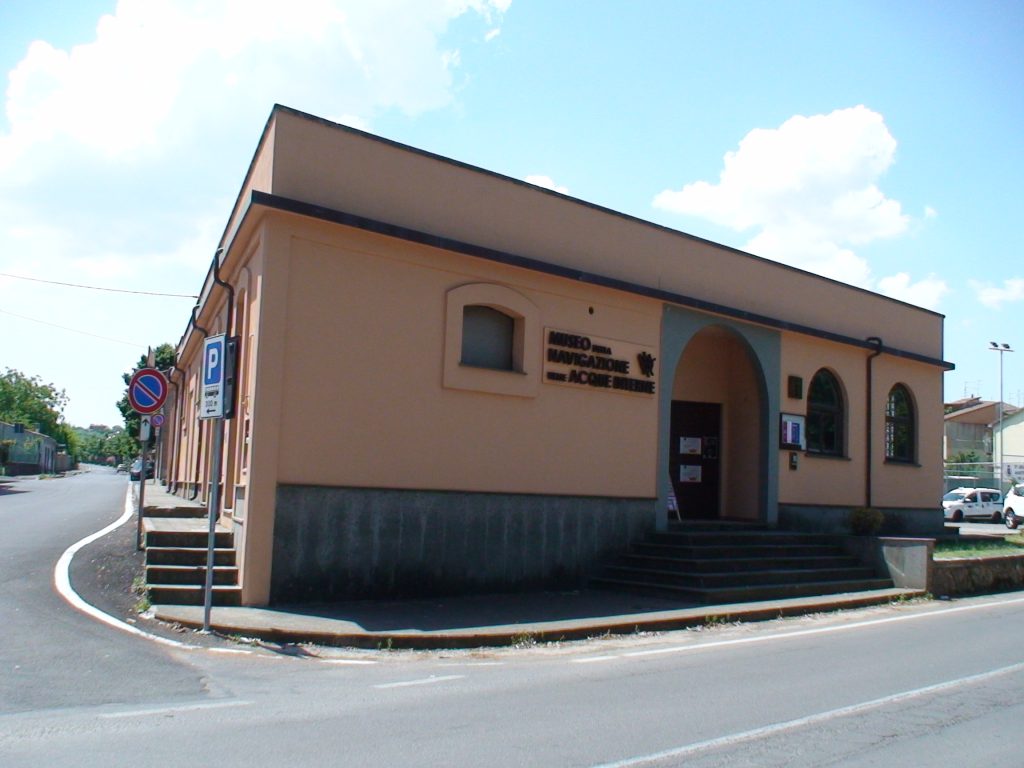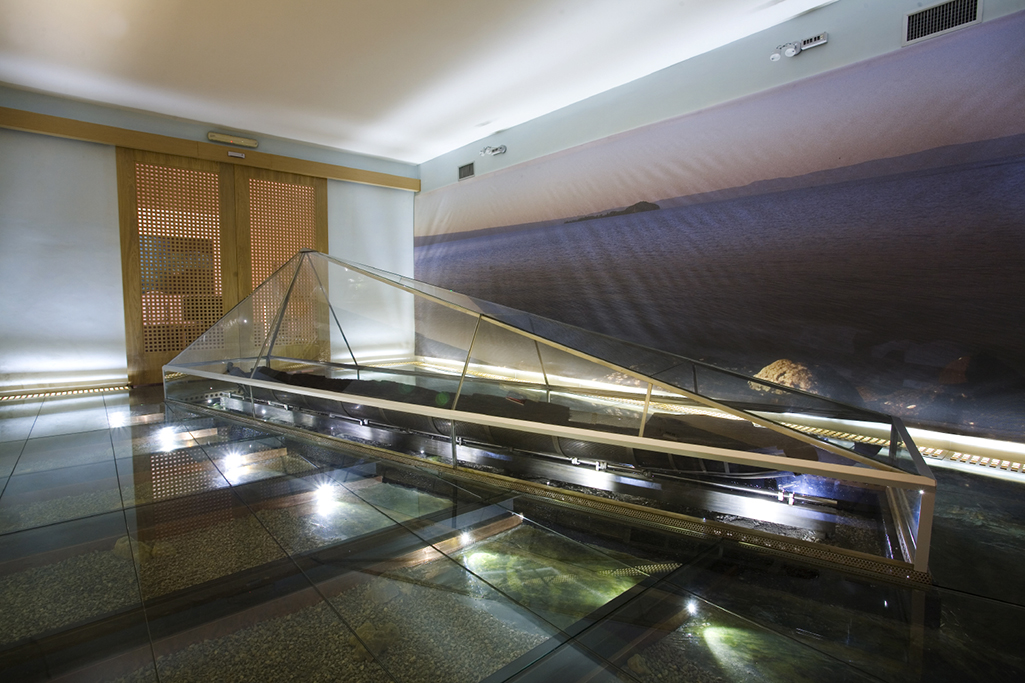- admin
- Nov, 09, 2024
- Places to visit
- Commenti disabilitati su 12. The Museum of Navigation


The structure, built on the site of the former slaughterhouse of the town, is located on Viale Regina Margherita, directly across from the first stretch of the lakeside promenade. It not only houses an interesting exhibition space but is also equipped with audio and video facilities for educational purposes. Here, visitors can explore everything related to navigation in inland waters and participate in conferences and seminars.
A highlight of the museum is its main exhibit: an ancient monoxylous canoe (from the Greek “monòxylos,” meaning “one wood”), which was discovered in October 1989 off the coast of Isola Bisentina, not far from Punta Calcino. Protected by a pyramid-shaped display case on a glass floor, this canoe was recovered through meticulous excavation in the sediment of the lakebed and underwent a lengthy and complex conservation process.
The wreck, found without any cargo at the time of discovery, has been dated using radiocarbon analysis to between 1365 and 1020 B.C. (during the late Middle Bronze Age to late Bronze Age). The vessel measures 6.2 meters in length, with a maximum width of 71 cm and a height of 27 cm. It was carved from a beech trunk and features an intriguing structural detail: remnants of a ring carved into the trunk itself, which may have been used to connect two canoes together, creating a sort of catamaran that would provide greater stability.
This remarkable artifact offers valuable insights into ancient maritime practices and highlights the rich history of navigation on Lake Bolsena. The museum serves as an important cultural center for both locals and visitors interested in learning more about this fascinating aspect of regional heritage.
In the museum, visitors can also view videos documenting the discovery and restoration of the ancient canoe. Information is available about a second, even older monoxylous canoe, discovered in September 1991 at a depth of 13 meters off Monte Bisenzio. This wreck, measuring 9.7 meters in length, has not been brought to the surface due to its delicate structure and remains protected on the lakebed by a metal “shield,” with plans to create an underwater archaeological park.
Radiocarbon analysis has dated this second wreck to between 1505 and 1325 B.C. (Middle Bronze Age), and xylotomic analysis revealed that it was carved from deciduous oak.
Visitors can also observe part of the cargo from an ancient shipwreck located off Punta Zingara on Isola Bisentina, which was discovered in 1990 at a depth of 14 meters. This cargo consisted of tiles, roof tiles, and tuff blocks, still stacked as they were found. Unfortunately, no wooden parts of this wreck remain, having been destroyed by water over time.
In the museum’s Conference Room, two original boats are on display: the traditional boat of Lake Bolsena, locally known as “bbarka” (constructed by the last master shipwright of the lake, Luigi Papini), and the boat from Lake Posta Fibreno, located on the border between Lazio and Abruzzo, referred to as “naue” by locals and dated between the late 19th and early 20th centuries.
These ancient monoxylous canoes provide essential contributions to our understanding of the anthropological history of the lake region and are fundamental for reconstructing the history of navigation in central Italy’s inland waters from prehistoric times to modernity. The museum features interactive stations and a specialized video library focused on the history of navigation and underwater archaeology, making it an engaging destination for those interested in these fascinating subjects.
In the “Sala dei Modelli,” visitors can find explanatory panels detailing the various types of boats used for navigation in river, lake, and marsh waters. This includes monoxylous canoes from Lake Trasimeno, a monoxylous boat from the necropolis of Caolino at Sasso di Furbara, boats from Lake Piediluco, riverboats from the ancient Roman port of Pisa, monoxylous canoes from the Pontine Marshes, and fishing boats from the Tiber River.
The exhibition offers an intriguing journey through the evolutionary path of these vessels, starting with monoxylous canoes that have been in use since the Paleolithic and Neolithic eras, progressing to boats constructed with assembled wooden planks—an outcome of refined nautical knowledge and techniques.
Today, traditional fishing on Lake Bolsena is conducted using triangular-shaped boats with flat bottoms and curved bows, measuring between 5 and 7 meters in length and 1.5 meters in width. While these boats were once made of wood, over the past fifty years there has been a shift towards mahogany, and currently fiberglass is commonly used.
Interestingly, this type of vessel has ancient origins; a similar small boat was found in a tomb at the ancient burial site of San Bernardino, dating back nearly 3000 years.
Fishing nets and sails, which were historically woven from hemp thread spun by fishermen’s wives, have now been replaced by nylon. Depending on the type of fishing being done, different nets are utilized: gill nets and seine nets for catching whitefish (coregoni), young eels (lattarini), perch (persici), pike (lucci), and mullet (cefali); partial seine nets for tench (tinche); as well as bertovelli or artavelli for eels (anguilla) and catfish (capitoni), among others.
The museum thus provides visitors with a comprehensive understanding of lake and river navigation through a historical journey showcasing the various types of vessels used by humans over time: rafts, canoes, sandals, galleys, feluccas, galliots, tartans, lenunculi, caudicarie, small boats (navicelli), burchi, bufale, scafe, battane, and many more.